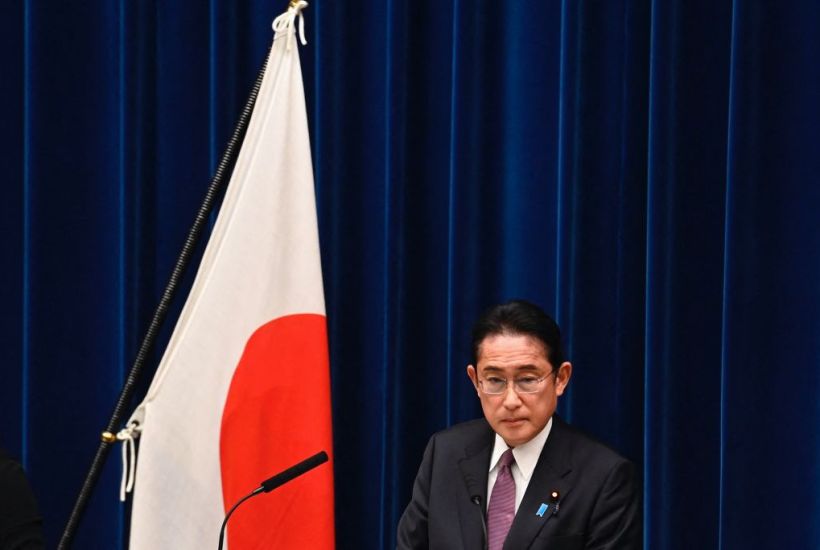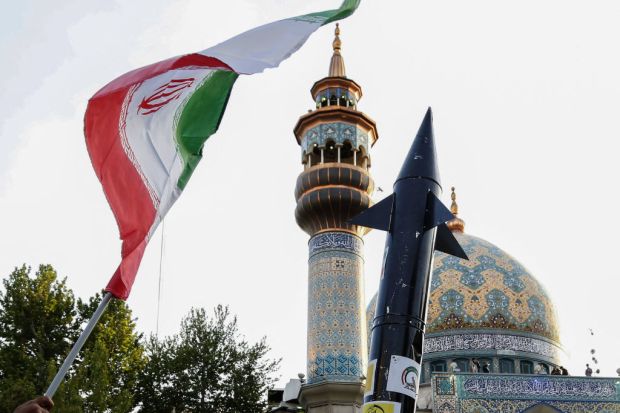Shinzo Abe, Japan’s murdered former prime minister, would this week be especially proud of his country. At long last, and after years of protests and strife during Abe’s time in power, Japan has announced a reversal of its uncompromising post-war pacifism. Japan, its current prime minister Fumio Kishida has said, will now begin to rearm.
What was in question was not armaments, per se, but rather the ability of Japan’s armed forces, the self-defence forces as they are called, to fight abroad. Japan’s post-war constitution declared the country formally pacifist, and renounced both the ability to wage war and the means to do so. But all of this is changing as China becomes a superpower – in particular an especially bellicose one with an invasion of Taiwan in its sights within the next five years.
‘In such a severe environment,’ Japan’s prime minister Fumio Kishida said late last week, ‘counterstrike capability, which can deter an attack, or force an enemy to stop one, is a capability which will become increasingly vital.’ On Friday the parliament voted to give the armed forces that power.
This vote provides the moral basis to allow Japan to operate militarily abroad, and underwrites a major campaign of rapid rearmament. For two months, Japan has been engaged in planning the beginning of a huge spending spree.
American and Pacific war-planners expect China to invade Taiwan on or before the hospitable maritime season in 2027. This does not give the other Asian democracies much time to arm themselves and shore up their defences.
Japan has decided to protect itself by increasing defence spending – for years capped at about 1 per cent of Japan’s GDP – to around the NATO minimum of two per cent. Not enough to break the bank, and quite a way off Britian’s magic and entirely theoretical 3 per cent target (let alone the 3.5 per cent spent by the Americans). But in an economy the size of Japan’s, two per cent will still buy rather a lot of hardware.
Japanese industry and capital are already looking into the options, and they are – from a procurement perspective in such an advanced economy – a little mouth-watering. Japanese engineers have begun to study the landscape in advanced fighter aircraft, hypersonic missiles and drones – and wondering how best to beat the field. If Japan truly commits to this new batch of spending, and dedicates its fine minds and strong industries to an arms build-up, the change would be remarkable.
For eighty years, Japan has been dependent for its own protection on the victor of the Pacific war, the United States. If Japan were to take up that burden itself, the United States would be the prime, delighted beneficiary.
Statements from American officials openly drip glee and pleasure. Jake Sullivan, the US national security advisor, said this was ‘a bold and historic step to strengthen and defend the free and open Indo-Pacific’.
In this discussion, we cannot gloss over the question of popular sentiment. We may think that everyone operating in Asia must understand that communist China is a deep and profound threat to free peoples, but this is not necessarily true.
If rearmament is advanced with the dedication it requires, the world will be thankful. Strong arms make peaceful neighbourhoods
For most of the post-Cold War age, Japan has, rather like Germany, congratulated itself on winning status and riches through trade rather than military power projection. It has taken a long time to shake Japan’s stagnant political culture out of its stupor. That was Shinzo Abe’s mission in life.
There will still be protests. There will still be disagreement. There may yet be political setbacks for Kishida, whose predecessor Yoshihide Suga was ejected from office after just over a year of alienating his own party and the electorate.
But if this move is advanced with the dedication it requires, the world will be thankful. Strong arms make peaceful neighbourhoods. A well-armed and mutually-defensive Asia-Pacific could deter a terrific and bloody Chinese conquest of Taiwan without firing a shot.
If this could be achieved, it would be of inestimable benefit. The Pacific is a fractious place. It needs rules and countries willing to act as deterrents and protectors. For too long that has fallen to America alone. And it cannot do everything. Regional security could see great advancement if Japan joins others in posing a serious counterweight to China.
There is only one small wrinkle. Earlier this year, another loser of the Second World War, Germany, announced its own rearmament. Prompted by Russia’s fascist invasion of Ukraine, Germany announced a €100 billion (£87 billion) supplement to current defence spending, and an increase in the total proportion of GDP allocated to defence.
No more free riding, no more provocative weakness, the chancellor and his ministers said. This was ultimately an investment in European freedom and a bid to keep the home fires of democracy burning. It was all quite moving.
But ever since, we have – to put it bluntly – been deceived. Ukraine has received a few German vehicles but cries out for more. No tanks for you, the chancellor has smirked. Germany has suggested that its defence spending increases might not begin to be felt within this decade.
And its leaders have slid, slug-like, towards giving Putin’s Russia guarantees and status as a normal country far in advance of the brutal defeat and reckoning that society deeply needs.
Japan’s move towards its own self-defence is admirable. It could reshape Pacific Asia for the good. But they could also yet chock out, as Germany has. We must accept that sad possibility, too.
The post Japan’s rearmament could be a force for good appeared first on The Spectator.
Got something to add? Join the discussion and comment below.
Get 10 issues for just $10
Subscribe to The Spectator Australia today for the next 10 magazine issues, plus full online access, for just $10.



















Comments
Don't miss out
Join the conversation with other Spectator Australia readers. Subscribe to leave a comment.
SUBSCRIBEAlready a subscriber? Log in